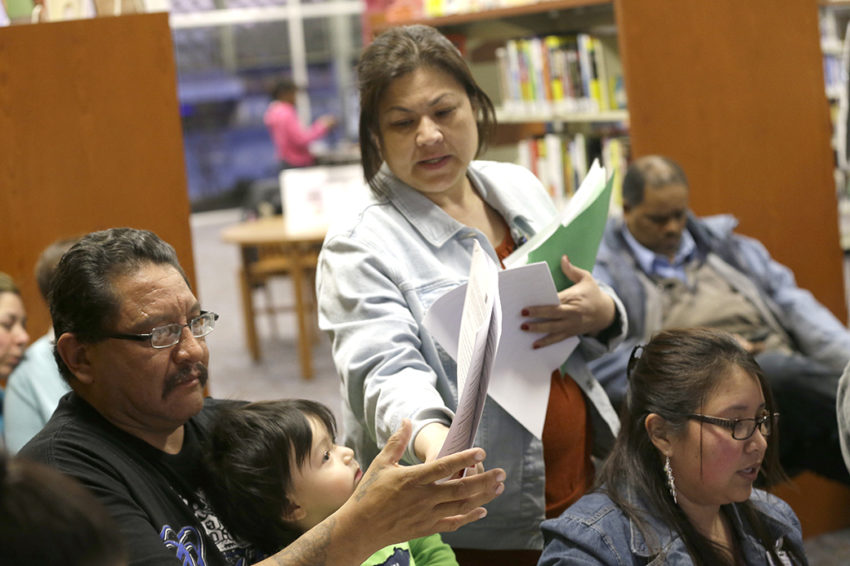
Share On Social!
The proportion of Americans with no health insurance coverage increased for the first time in a decade, even as poverty is declining, according to new census data.
In 2018, 27.5 million Americans did not have health insurance, an increase of 1.9 million people from the 2017. The rate of Americans lacking coverage rose from 7.9 to 8.5 percent of the population.

The percentage of uninsured children increased by 0.6 percentage points between 2017 and 2018, to 5.5%. Minorities shouldered higher disparities.
Latino kids saw the sharpest rise in uninsured rates compared to other races, from 7.7% uninsured to 8.7%.
This, even as the poverty rate fell last year to its lowest level since 2001.
The decline in poverty and increase in uninsured people seems to “reverse the trend that began when the Affordable Care Act expanded opportunities for poor and some middle-income people to get insurance,” according to the Washington Post.
“Taken together, the census numbers paint a portrait of an economy pulled in different directions, with the falling poverty rate coinciding with high inequality and the growing cadre of people at financial risk because they do not have health coverage,” the Post reports.
How Is Declining Insurance Coverage Affecting Latinos?
2010’s Affordable Care Act (ACA), or Obamacare, aimed expand healthcare insurance access, especially to uninsured, mid- to low-income Americans — a classification many Latinos find themselves in.
Since ACA began four million adult Latinos and 600,000 children have obtained medical coverage. The rate of Latinos without coverage fell by 10.9% since 2013.
The new Census report shows that the ACA’s trend in increasing insurance coverage may be over.
 In 2018, 94.6% of Whites had health insurance coverage. This was higher than for Asians (93.2%), Blacks (90.3%), and Latinos (82.2%). Between 2017 and 2018, the overall health insurance coverage rate decreased by 1.6 percentage points for Hispanics, but did not statistically change for the other three race groups.
In 2018, 94.6% of Whites had health insurance coverage. This was higher than for Asians (93.2%), Blacks (90.3%), and Latinos (82.2%). Between 2017 and 2018, the overall health insurance coverage rate decreased by 1.6 percentage points for Hispanics, but did not statistically change for the other three race groups.
The Census report also found persistently high uninsured rates among impoverished in states that have refused to expand Medicaid under the ACA.
“The data released by the Census Bureau confirmed our worst fears,” says Joan Alker,executive director of the Georgetown University Center for Children and Families, which has been tracking the decline in enrollment for the main health care safety net programs for children.
Why the Decline in Health Insurance?
Experts say the decline in insurance coverage is partly due to the Trump administration’s efforts to undermine the ACA.
Indeed, rulings against ACA are seriously affecting Latino participation. Another reason for the decline is fear around the public charge rule changes.
The increase in people with no health insurance is extremely troubling.
“It’s very frightening in that if this is happening now with unemployment at 3.7 percent, then what’s going to happen when the employer coverage situation gets worse?” Eliot Fishman, a senior director at the consumer group Families USA and a top Medicaid official in the Obama administration, told the New York Times. “There’s a fear we could see really dramatic increases in the uninsured rate if that happens.”
Some efforts are still ongoing to try and increase health insurance coverage.
For example, Hispanic Unity of Florida holds bilingual healthcare registration events. They offer appointments with trained, bilingual application counselors at their headquarters.
“We felt that having access to health insurance would go a long way in helping these people not just get the medical treatments they needed, but also help them be healthier in the long term,” said Magaly Alvarado of the group.
Learn more about healthcare access!
Editor’s Note: Main image is an Associated Press file photo by LM Otero.
Explore More:
Healthcare AccessBy The Numbers
142
Percent
Expected rise in Latino cancer cases in coming years



